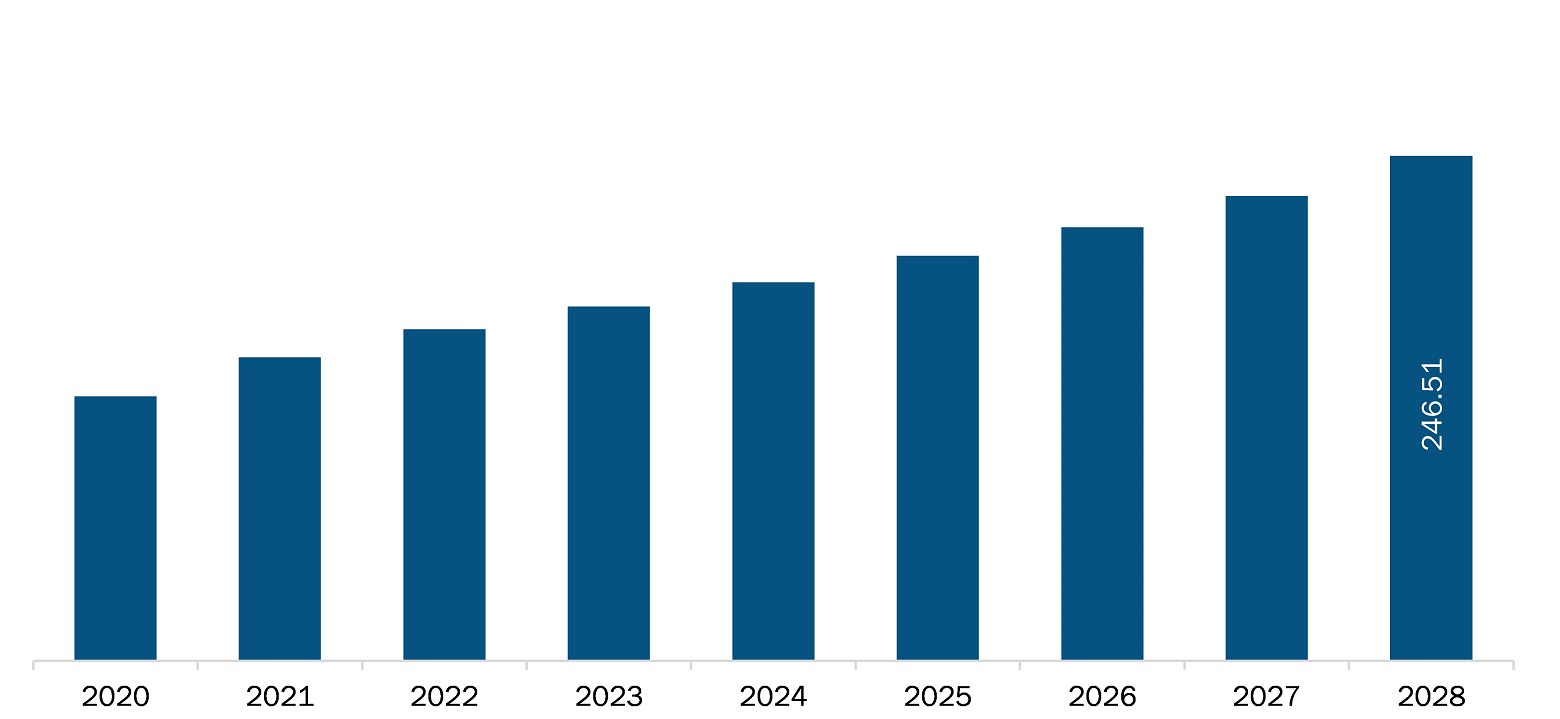The Middle East and Africa dual clutch transmission market is expected to reach US$ 246.51 million by 2028 from an estimated value of US$ 129.09 million in 2021; it is likely to grow at a CAGR of 7.5% from 2021 to 2028.
Growing sales of SUVs worldwide and increasing concerns about fuel economy and CO2 emission are driving the market. However, the increasing adoption of electric vehicles and their high costs may hamper the growth of the Middle East and Africa dual clutch transmission market during the forecast period.
A dual clutch transmission (DCT) combines the convenience of an automatic transmission with the fuel efficiency of a manual transmission. The 21st century has observed refinement in vehicle design in terms of problems relating to aerodynamics. The global scenario is not much different. Therefore, there is enormous scope for improving the aerodynamics of cars to conserve depleting oil reserves. Dual clutch transmissions (DCTs) refer to the double friction clutches; they are designed and operated fully automated in vehicles. Also, the auto industry has seen a perpetual increase in the level of global competition. The increase in the complexity of vehicle design and content has led to time-consuming and expensive development processes. The high cost and long gestation period imply a notable risk for the automakers.
On the contrary, technology will play an ever-increasing role in this global competition, requiring high-quality products that are safe to use and economical to design and manufacture. Furthermore, advanced techniques such as dual clutch transmission systems are used by automotive OEMs to minimize fuel consumption and CO2 emissions while preserving performance. The Environmental Protection Agency (EPA) and the Nationwide Highway Traffic Safety Administration (NHTSA) worked together to create a national program for greenhouse gas emissions (GHG) and fuel efficiency requirements for light-duty automobiles (passenger cars and trucks). Phase 1 covered model years 2012 to 2016, while Phase 2 covered model years 2017 to 2025. Moreover, the growth of CO2 restrictions continues to be the fundamental driver of automobile technology advancements. The need for greenhouse gas-neutral powertrains drives the development of electrified systems and the search for feasible options for alternative, low-carbon fuels. Also, dual-clutch transmission effectively boosts the driving experience as it improves acceleration and offers smooth gear shifting. Furthermore, the rising adoption of hybrid vehicles across the globe, coupled with the increasing integration of DCT, is creating attractive sales opportunities.
South Africa recorded the highest number of COVID-19 cases in the Middle East and Africa region, followed by Saudi Arabia and the UAE. The Middle East and Africa region has a smaller number of companies operating or offering market-specific solutions. In April 2020, the number of used online car listings in the UAE dropped by nearly half. The automotive industry is waiting for the situation to return to normalcy and for other industries to restart their work processes as factories are unable to resume operations and demands from the customers are low. Due to the lockdowns in many countries in the MEA, supply chain disruptions have been observed. Thus, the factors mentioned above negatively impacted the growth of the dual clutch transmission market in the region in 2020. However, in 2021, with the relaxation of lockdown restrictions, vehicle manufacturing has started again, and the raw materials are available in the market with improving supply chain facilities. This will help in creating a favorable scenario for the dual clutch transmission market growth in the region.

- This FREE sample will include data analysis, ranging from market trends to estimates and forecasts.
MIDDLE EAST AND AFRICA DUAL CLUTCH TRANSMISSION MARKET SEGMENTATION
By Vehicle Type
- Passenger Car
- Commercial Vehicle
By Propulsion Type
- Internal Combustion Engine (ICE)
- Hybrid
By Vehicle Segment
- A/B
- C
- D
- E and Above
- SUV
By Forward Gears
- 6 and Below
- 7
- 8 and Above
By Country
- South Africa
- Rest of Middle East and Africa
Company Profiles
- Magna International Inc.
- Schaeffler Technologies AG & Co. KG
- BorgWarner Inc.
- Daimler AG
- Volkswagen AG
- ZF Friedrichshafen AG
- OC Oerlikon Management AG
- Ricardo
- Renault Group
- Hyundai Transys
Middle East and Africa Dual Clutch Transmission Report Scope
| Report Attribute | Details |
|---|---|
| Market size in 2021 | US$ 129.09 Million |
| Market Size by 2028 | US$ 246.51 Million |
| CAGR (2021 - 2028) | 7.5% |
| Historical Data | 2019-2020 |
| Forecast period | 2022-2028 |
| Segments Covered |
By Vehicle Type
|
| Regions and Countries Covered |
Middle East and Africa
|
| Market leaders and key company profiles |
|
- Historical Analysis (2 Years), Base Year, Forecast (7 Years) with CAGR
- PEST and SWOT Analysis
- Market Size Value / Volume - Regional, Country
- Industry and Competitive Landscape
- Excel Dataset
Recent Reports
Testimonials
Reason to Buy
- Informed Decision-Making
- Understanding Market Dynamics
- Competitive Analysis
- Identifying Emerging Markets
- Customer Insights
- Market Forecasts
- Risk Mitigation
- Boosting Operational Efficiency
- Strategic Planning
- Investment Justification
- Tracking Industry Innovations
- Aligning with Regulatory Trends





















 Get Free Sample For
Get Free Sample For